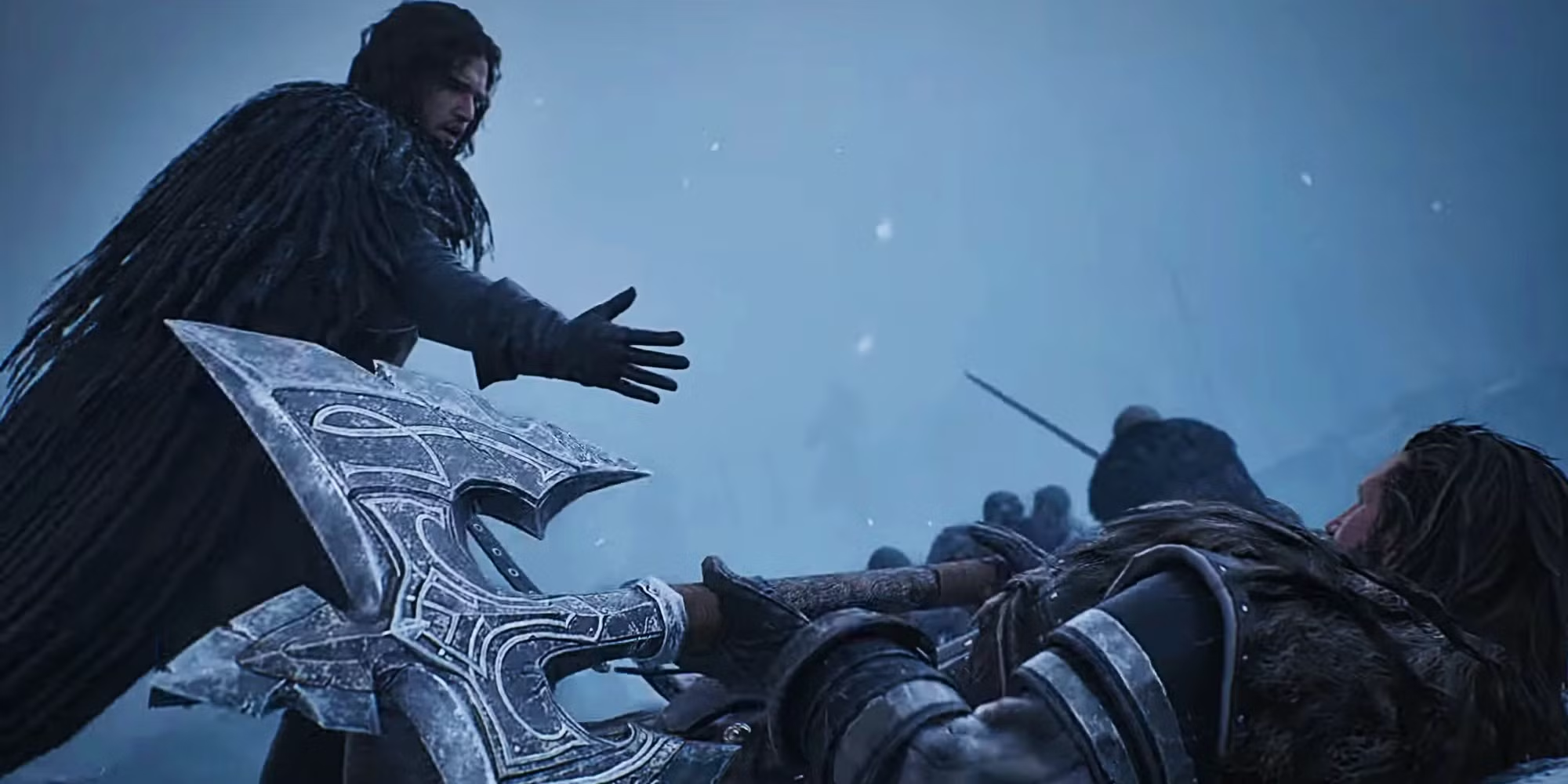Melisandre is a character shrouded in mystery. The Red Woman has displayed a wide range of abilities, whether its raising the dead (maybe), giving birth to a shadow demon, or drinking poison and surviving. Also, in A Dance with Dragons, it’s mentioned that she doesn’t need to eat and that she doesn’t feel cold. But even with that information, we’ve learned very little about her and where she comes from. We got our clearest peek behind the curtain in season 6, when she removed her ruby choker and revealed herself to be an elderly, infirm woman who uses magic to appear young and beautiful. But exactly how old is she, and what has she spent the bulk of her life doing?
Redditor Smack8001 may have an explanation to some of the mysteries surrounding this character. What if — bear with me here — Melisandre is actually an undead wight, brought back from the dead like Beric Dondarrion and Jon Snow after her?
Wooh boy. Strap in.
Wights are servants of the White Walkers, zombies raised to do their bidding. For the most part, all they want to do is murder mankind. But not all wights are created equal. Benjen Stark was raised by the Children of the Forest, and retains enough of his mind to help members of his family who happen to go beyond the Wall. Also, A Song of Ice and Fire author George R.R. Martin has said that there’s more than one way to make a wight. Listen to what he had to say about Beric Dondarrion, who’s been brought back to life numerous times by Thoros of Myr, in an interview with TIME:
His memories are fading, he’s got all these scars, he’s becoming more and more physically hideous, because he’s not a living human being anymore. His heart isn’t beating, his blood isn’t flowing in his veins, he’s a wight, but a wight animated by fire instead of by ice, now we’re getting back to the whole fire and ice thing.
So according to Martin, there’s a difference between wights brought back by the White Walkers or the Children of the Forest, who use ice, and those brought back by the followers on the Lord of Light, who use fire. Excepting Benjen, all of the ice wights have been of the mindless zombie variety. But the ones brought back by fire — Beric, Jon, and one more in the books — have more control over themselves. Is Melisandre one of these kind? Smack8001 tries to answer that question by comparing her to Beric:
Beric and Fire Wights:
- Their memories fade.
- They become more and more physically hideous.
- They accumulate scars.
- Their hearts do not beat.
- Their blood does not flow.
- Beric’s reanimation is associated with the magic of the Red Priests of R’hllor.
- Beric loses his identity over time.
- Beric is able to, or at least partially responsible for, reanimate Catelyn Stark also as a wight.
Melisandre:
- She drinks what appears to be poison and it does not affect her. (against Maester Cressen)
- She does not need to eat.
- She draws a distinction between herself and “mortal men”.
- She has an unnatural warmth to her body. (scene with Jon Snow)
- She is older than she appears.
- She wears a ruby, which is associated with glamors.
- She is associated with the magic of the red priests of R’hllor.
- She draws a distinction between her kind of “life” and the normal life of other creatures. (again, scene with Jon Snow).
- Her identity is completely wrapped up within the worship of the Lord of Light.
- She does not feel cold.
Whether it’s the lack of need for food, the loss of memory or an inability to feel cold, these traits point to one thing: a fire wight’s body no longer functions like that of a normal person’s, despite looking normal on the outside. The similarities may go further, as in the novels, Dondarrion also possesses the ability to raise the dead, albeit at the cost of his own “life.”
The theory would go a long way towards explaining Melisandre’s penchant for secrecy, and her preternatural sense of calm — once you’ve been to the other side and back, it’s easy to be unflappable. (And I guess it technically makes Stannis a necrophiliac…gross.) As a fire wight, Melisandre would also be naturally opposed to the ice-based White Walkers, a purpose to which Beric is also now dedicated. A conflict between fire and ice wights would fit into the title of Martin’s series, as well.
On the flip side, there are plenty of holes in this theory. For one thing, if Melisandre was indeed raised from the dead at some point, why was she so gobsmacked when she found out that Thoros could do it, and later when she was able to do it herself? She acted like she’d never heard of this power before. Although it could have been a very long time since it had happened to her. (There’s also the intriguing question of how Melisandre would have died in the first place — a question for one of the spinoffs.)
Also, in the novels, Beric raises Lady Stoneheart from the dead by breathing life into her, and then dying himself. In contrast, Melisandre raised Jon Snow with a ceremony, and continued her life afterwards. That’s one way in which the two are dissimilar. But then again, that discrepancy could be explained by saying that Melisandre is a Red Priest who knew her way around a resurrection spell whereas Beric was not.
Or maybe we’re just reading too much into this. But isn’t that the way with A Song of Ice and Fire theories? It’s a tantalizing idea that could potentially play a major role in the final season of Game of Thrones.
What do you, the reader, think? Let us know in the poll below!
To stay up to date on everything Game of Thrones, follow our all-encompassing Facebook page and sign up for our exclusive newsletter.
Watch Game of Thrones for FREE with a no-risk, 7-day free trial of Amazon Channel




















![[Book Review] The Blade Itself (The First Law Trilogy) by Joe Abercrombie](https://bendthekneegot.com/wp-content/uploads/2018/01/1516047103_maxresdefault-218x150.jpg)


















